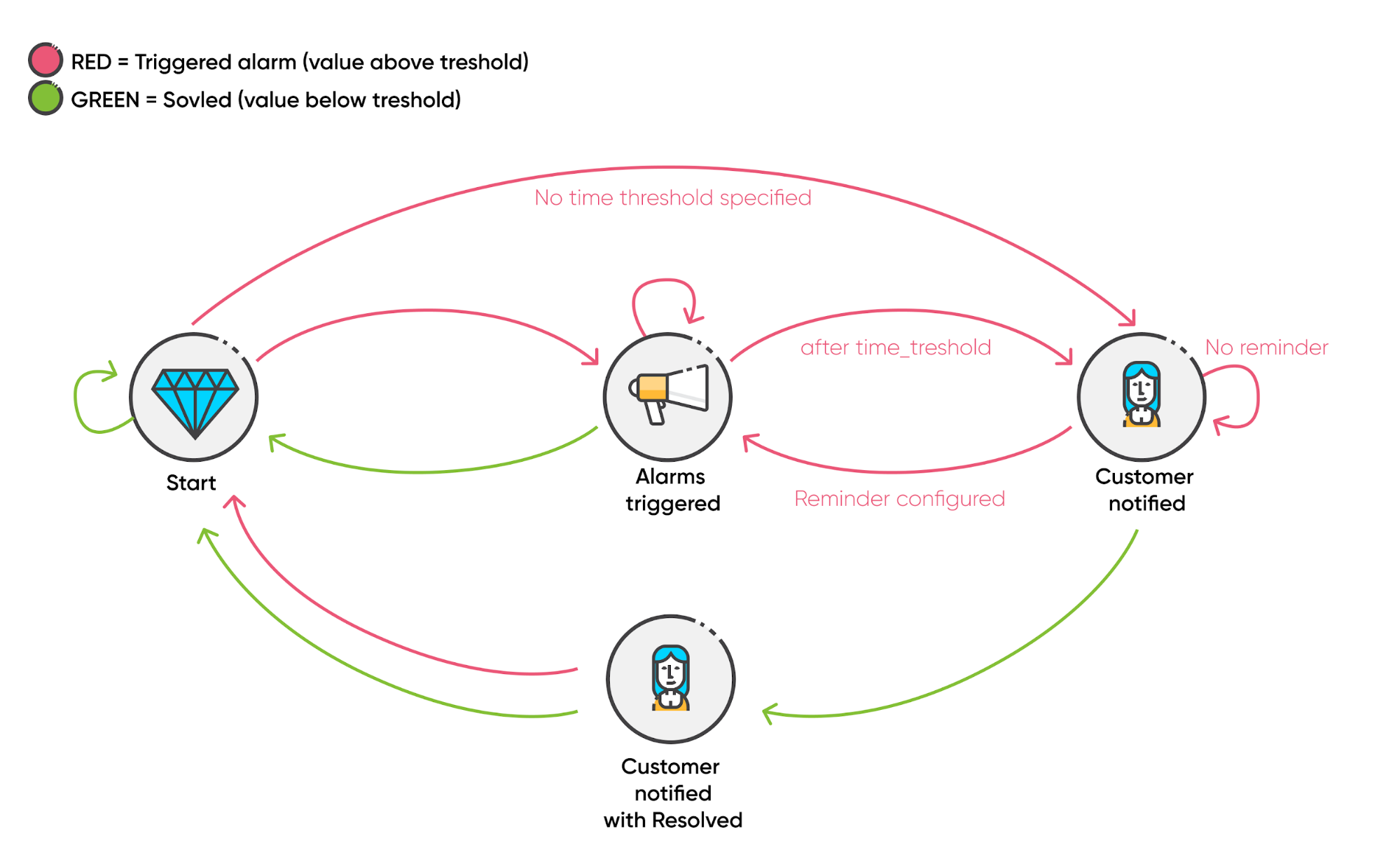All clusters on CloudAMQP are monitored to ensure that they are online and continue serving messages. The server is monitored, for the status of CPU, memory, and disk usage, among other issues. The performance of RabbitMQ is also monitored including how many connections, channels, and queues exist, and how many messages there are in a queue. Customers have the ability to set up alarms for any of these metrics, and now this service is even more robust!
Get notified by all triggered alarms
First, the system that notifies customers about the alarms has been updated. Previously, every alarm had a cooldown of one hour after it got resolved, meaning that if the same alarm would trigger again, there would be no notification. This is no longer the case, and users are notified about all triggered alarms.
Add a reminder interval
Now, a reminder interval can be specified for the alarms. The previous setting notified users once the alarm was triggered and also once it got resolved. With the upgrade, users have the ability to add a reminder interval so that if the alarm cannot be handled directly, there will be another notification after a specified interval. Please note: These intervals don’t apply for those using PagerDuty, OpsGenie, or VictorOps as they have their own way of handling reminders.
 Image description: Flow chart of how the alarm system works
Image description: Flow chart of how the alarm system works
Great improvements for UI
Major improvements have been made to the UI parts. Existing alarms can be edited, including changing the time threshold, value threshold, and basically tweaks for all parameters of the alarm. Alarms can also be disabled so they don’t have to be deleted and recreated.
More improvements include:
- Setting multiple alarms for CPU, memory, and disk space. For example, set a friendly reminder to Slack on a low threshold and when it gets close to maximum trigger PagerDuty or any other service.
- Trigger each alarm from the UI with the ability to see how the alarms look and how it would react when triggered. This is very useful when trying webhooks.
- The same goes for recipients - edit each recipient and trigger a notification for that recipient.
- Give a recipient a custom name to make it easier to remember which one is which.
- For VictorOps integration, it is now possible to use custom routing keys, which fulfills a popular user request.
If you have any questions or concerns regarding the improved alarms, write a comment below or send an email to support@cloudamqp.com
All the best, The CloudAMQP team






